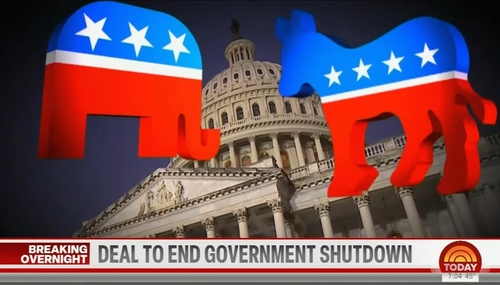
Although the seven minute video, narrated by Cokie Roberts, is brief, it does feature an interesting quote from NBC Nightly News anchor Brian Williams. (Please note, I’m paraphrasing here.) He concedes:
You would often see something like this: ‘Today, extreme conservative Republican Newt Gingrich met with Massachusetts Democrat Ted Kennedy.’ Now, hold on. Where’s the appellation for Ted Kennedy? You called Gingrich an extreme conservative, but what about Kennedy? And for years, we in the media would do that sort of thing.

Outside the theater on bias, there is this sign:
News Sometimes Gets a Partisan Slant
Patriot journalists in Colonial America didn’t always tell all sides of the story. They mostly told one side- their side. They were far from "objective" -a word that journalists would not use to describe their work until the late 19th century. Anyone and anything were fair game for the "scandalmongers" of the Colonial era. Their mixture of news and opinion was the forerunner of advocacy journalism in the United States- a style of partisan commentary that eventually found its way into editorial pages, which were introduced in the 1850s, and then into talk radio and internet blogs. [Emphasis added.]
Partisan commentary found its way into talk radio and internet blogs? How about the Washington Post, New York Times and MSNBC? Was Dan Rather not engaging in "advocacy journalism" during his 2004 efforts to discredit George W. Bush? (Rather's 60 Minutes debacle is briefly featured in one section of the Newseum.)
Another wing of the museum contains a huge collection of newspapers from historic events. Included in this area is the December 20, 1998 Washington Post, along with that day's Washington Times. The two papers recount the impeachment of Bill Clinton. A Newseum note, placed next to the papers, instructs patrons to notice how the Washington Times headline claims that the President was "Indelibly Stained In a Decisive Vote." The insert pointed out that the Post highlighted the partisan nature of the House's action. In other words, so-called conservative bias against Clinton is singled out. I could not find this type of note repeated elsewhere.
The outside of the building features a huge rendering of the First Amendment, an impressive sight to see. It’s too bad that the interior of the Newseum doesn’t focus more on objectivity and admit the occasions when journalists fail to meet that high standard.
For more on the Newseum’s bias, see the July 7, 2008 blog by the MRC’s Kyle Drennen. He observed how the journalistic ethics section was smaller than the gift shop.




